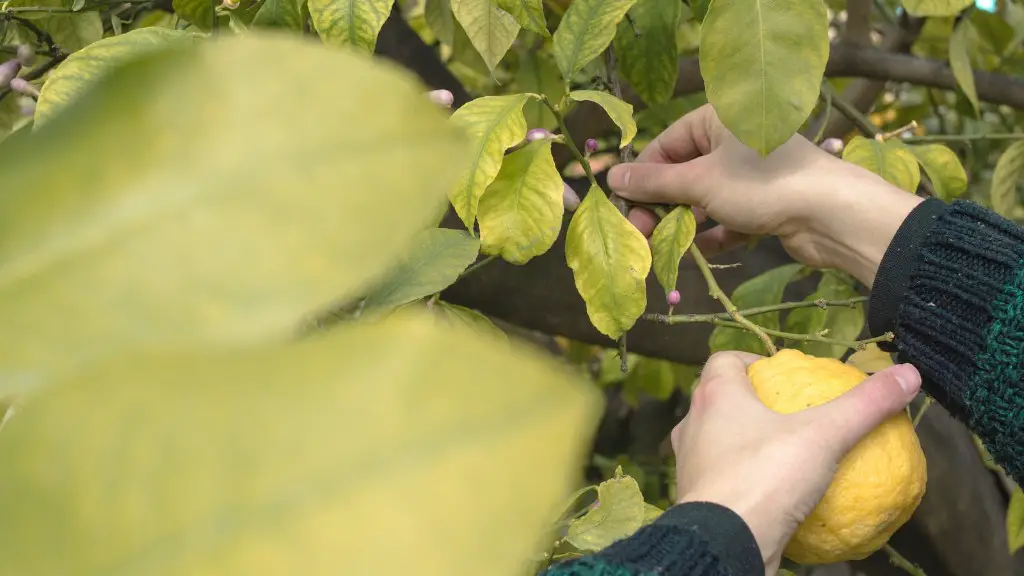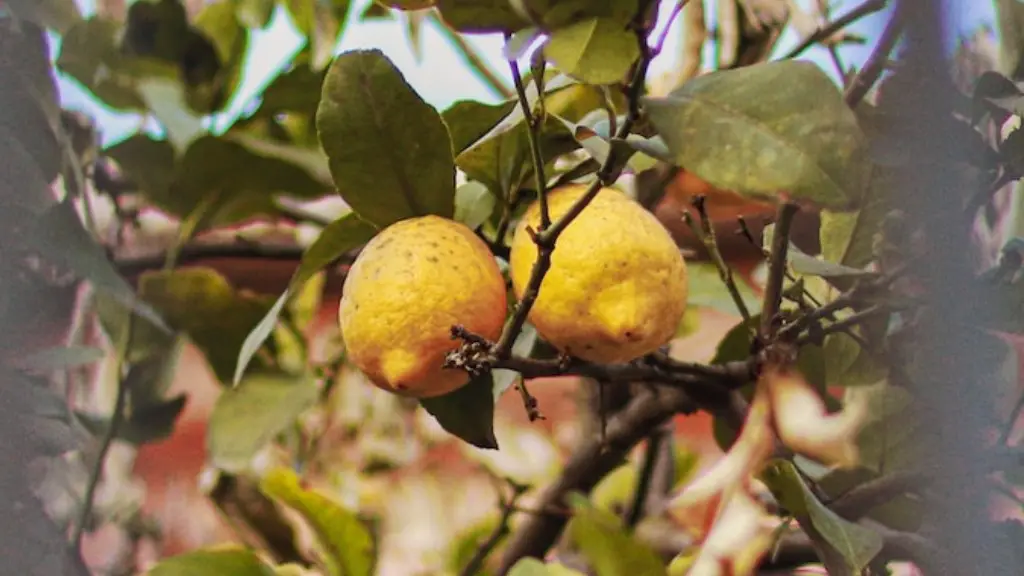Growing lemon plants indoors is a simple and rewarding process. With proper care and maintenance, the dwarf variety of lemon tree can flourish in any home. To successfully plant a lemon tree indoors, start by selecting a healthy, disease-free tree and the correct pot. Next, prepare the soil, pot, and water the plant to ensure healthy growth. Lastly, fertilize and carefully manage the temperature, light, and humidity of the environment.
When selecting a lemon tree, choose a dwarf variety of lemon such as ‘Meyer’ or ‘Yuzu’ for the best results. With dwarf varieties, you can expect to yield about 2-4 lemons over a season per tree. As with any purchase, choose a tree that is pest and disease free and shows little to no signs of visible damage. Additionally, make sure the pot you choose is wide and deep enough to accommodate the root system.
Preparing the soil is an important step in the planting process. Organic potting mix is best due to its nutrient-rich properties. To ensure a nutrient-dense soil, amend the soil with compost, perlite, and a small amount of sand. Once complete, make sure the pot has one or two draining holes in the bottom as well as an elevated platform. Additionally, it’s important to moisten the soil prior to planting to make sure the soil is not dry.
Once the tree and soil are ready, carefully unpack the lemon tree from the container, and discard any excess soil from the root system. Gently place the root system into the soil mixture and fill with soil until the top of the root sits just below the soil surface. Subsequently, water the soil afterward to further its’ moisture content.
After the lemon tree is planted, the soil should be frequently monitored to check for adequate moisture content. Lemon trees require regular watering once a week, or more during the hot summer months. Additionally, an appropriate fertilizer must be provided for the best possible growth, usually in the form of a water-soluble 6-6-6 fertilizer. Lastly, the environment where the lemon tree will be placed must be carefully managed to ensure successful growth.
Temperature and Light
When placing the lemon tree indoors, it is important to select a sunny spot that receives 6-8 hours of direct sunlight daily to encourage photosynthesis. Additionally, the ideal indoor temperature should be between 65 and 75 degrees Fahrenheit. Strive to maintain a consistent temperature, as frequent fluctuations in temperature can weaken the tree and cause it to become more vulnerable to diseases and pests. Lastly, warm drafts, fans, and heating vents must be kept away from the tree to protect it from any sudden and drastic temperature changes.
Humidity
Citrus trees demand a high level of humidity. The best way to achieve the correct humidity levels is to mist the tree daily with a spray bottle, which raises the humidity of the environment to an acceptable level and keeps the leaves healthy. For further assistance, large containers of water located near the lemon tree can help regulate the humidity around the plant. Lastly, be sure to monitor both the soil and air’s moisture content to ensure the best possible growth.
Prunes and Maintenance
The lemon tree must be pruned often to encourage healthy, robust growth. Prune back any dead and diseased branches, as well as any overcrowded branches to increase air circulation throughout the tree. Additionally, remove any fruit buds within the first few years to ensure a healthy, steady growth. Don’t hesitate to ask for professional advice when pruning, as it is an important factor in the overall growth of the plant.
Treatments and Preventative Measures
It’s important to look out for signs of pests or diseases and treat them accordingly. Common pests like aphids, white flies, and mites should be treated with an insecticidal soap or neem oil as soon as they appear. Additionally, tree bark must also be frequently checked for fungal diseases. Take preventative steps to keep diseases away, such as ensuring the soil is never overly wet and keeping the humidity levels at the appropriate level. Some diseases can take years before they start showing any kind of signs, so regular monitoring is a must.
Good Rotation Practices
It’s recommended to rotate the lemon tree once a month to ensure even exposure to light. This practice also encourages healthy growth and prevents the tree from becoming root bound. If the plant is kept in an area with direct sunlight, keep it inside during the hottest parts of the day and adjust the shade cloth when necessary.
Harvesting the Lemons
When the time comes to harvest, do it with great care and make sure to wear gloves to protect your hands from the tree’s thorns. Once the lemons are picked, store them in a cool and dry location. The lemons can be stored up to a week, depending on the variety and ripeness.


